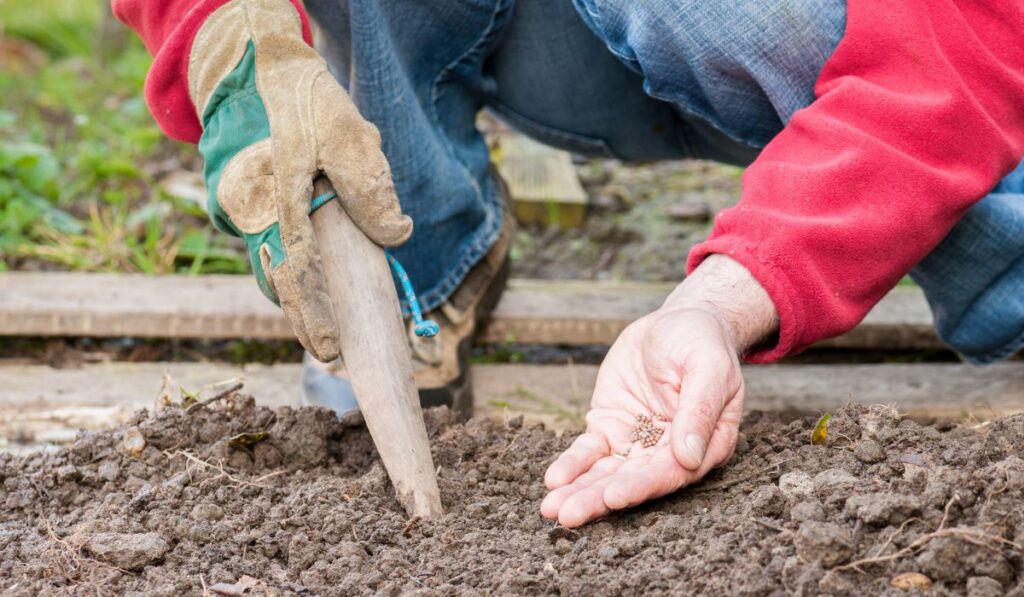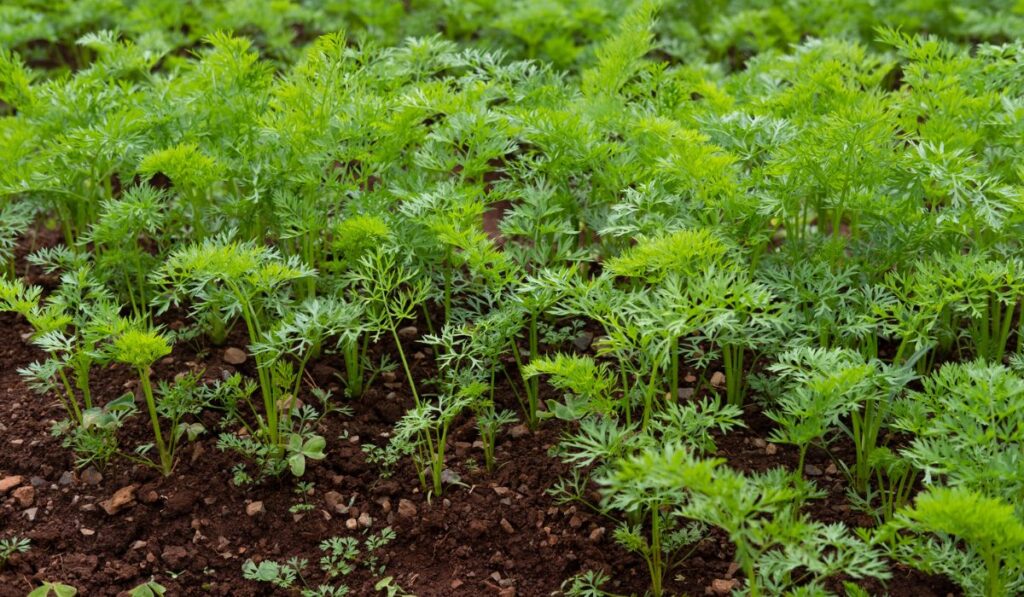Planting crops to coincide with the moon’s phases is an agricultural technique practiced since ancient times. Farmers who have tested planting their crops by the moon cycle claim that it improves planting yield. Modern science has also validated the benefits of full moon planting by tracing the effects of certain natural elements like gravitational pull and soil moisture on plant growth.
Planting seeds during the New moon or First Quarter ensures a strong, healthy, and productive plant. Most underground crops thrive in cool weather and should be planted in early spring or late summer. Avoid sowing seeds during Last Quarter and focus on pruning and preparing the plant beds.
According to common belief, just as the ocean tides are affected by the moon’s gravitational pull, the soil’s moisture is also affected. So let’s find out more about full moon planting and the best time to plant underground crops according to the phases of the moon.
When is the Best Time to Plant Underground Crops?

Underground crops are a favorite of home gardeners and commercial growers because they’re delicious, versatile, and ideal for over-winter storage.
Carrots, radishes, beets, and turnips are full of nutrients and vitamins, easy to grow, offer a wide range of textures and flavors, and can be enjoyed cooked or raw.
The best time to plant underground crops is in late summer or early spring. They’re cool weather crops and prefer a temperature of 70 degrees Fahrenheit for germination. Most root crops germinate within a week or ten days of planting, while carrots can take up to 3 weeks.
Instead of transplanting, direct sowing is best for underground crops as there’s less root disturbance. Let’s now look at how you should plant various underground crops and when’s the best time to plant them:
Beets
Soaking the seeds for 24 hours in warm water before sowing helps in germination. The best time to sow beet seeds is in early spring; however, if you’re in Zone 9 or 10, you can also sow these seeds in the fall.
Be sure to sow beet seeds at a depth of four times their size. Then, to enjoy beets throughout the season, plant them successfully at 3-week intervals. This underground crop thrives in full sunlight, where the soil is rich, loose, and well-drained.
The seeds germinate in about two weeks, and your crop will be ready for harvest in two months.
Radishes
Typically, radishes are planted in early spring; however, people living in Zones 8 and warmer can sow the seeds in the fall to enjoy in the winter. Plant the seeds successively at two-week intervals until mid-spring before planting them again in late summer.
This crop needs full sunlight and rich, well-drained, sandy, moist, and loose soil. Seed germination requires 6 to 10 days.
Carrots
Although carrots are typically planted in spring, in warmer climates, this crop can also be sowed outdoors in the fall. Plant the seeds ¼-inch deep in rich, deeply worked, well-drained, and loose soil.
Turnips
Turnips are planted in early spring when the danger of frost has passed, but the ground is still cool. Sow the turnip seeds successively for up to 5 weeks before the temperature reaches 80 degrees Fahrenheit or above and again in late summer for a fall harvest.
This underground crop can be sowed in warmer places from early fall through spring for a winter harvest.
What is Full Moon Planting, and Why is it Important?
Gardeners have used moon cycles and astrological signs for hundreds of years to decide when to plant their crops. However, as the oceans’ tides are affected by the moon’s gravitational pull, people believe that the pull also affects the fluids inside the plants.
Astrological signs are connected to air, water, fire, and earth elements. So to enjoy a good crop of underground vegetables, it’s best to choose a day after the full moon that corresponds with an earth sign.
The period between the last quarter and the full moon is highly favorable for root growth.
Planting your underground vegetables during this period is recommended because the high gravitational pull of the waning moon creates more moisture in the soil. In contrast, the decreasing moonlight helps plants to focus on energizing their roots.
Avoid planting during the fourth quarter, as it’s the resting period for all plants.
Also, never sow, take or plant cuttings 12 hours before and 12 hours after the exact day the moon phase changes. Instead, turn compost heaps or apply mulch to prepare the beds for planting during this time.
How Weather and Climate Affect Underground Crops

Knowing the weather conditions best for each vegetable will ensure a fruitful harvest. In addition, you’ll be able to provide your plants with the right amount of sunshine and protect them from damage from frost.
Most underground vegetables grow best in cool weather, while some can thrive in the summer heat. Turnips, carrots, beets, and radishes are easy-to-grow, cool-weather underground vegetables that can provide a large yield even in a small space.
White potatoes also prefer cool weather conditions, so plant them as soon as the ground thaws. On the other hand, sweet potatoes require a long, hot growing season.
How to Use a Full Moon Planting Calendar
As moonlight increases, it influences how strongly and quickly seeds and plants grow. Moon phases can be divided into four quarters, each lasting almost seven days. They are:
- New Moon: During the New Moon, the gravitational pull is strong, and the light increases. It’s the best time to sow seeds.
- First quarter: During this period, although the gravitational pull becomes less, the moonlight becomes stronger, making it an excellent time to plant seeds.
- Full Moon: The light decreases during the full moon phase, and the sap flows downwards. This time is best for planting underground vegetables as it’s a good root growth period.
- Last Quarter: This is the time for rest as both gravitational pull and light are decreased. Avoid planting seeds during this period.
